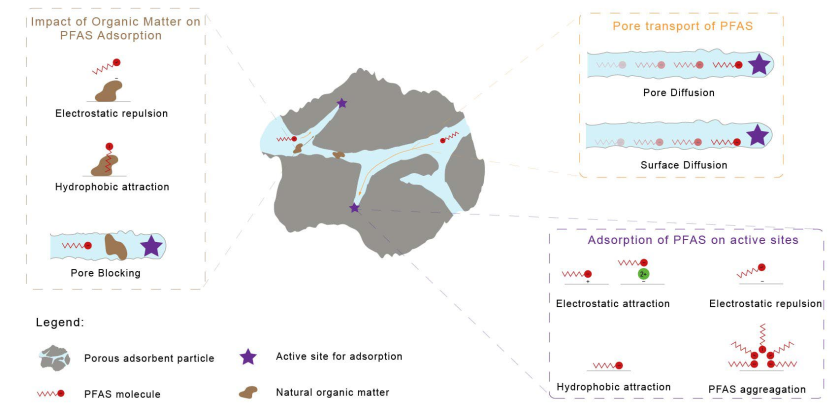
Project
Towards Mechanistic Understanding of the Interactions Between Per- and Polyfluoroalkyl Substances and Adsorption Materials in Drinking Water Treatment
Per- and polyfluoroalkyl substances (PFAS) are a family of anthropogenic micropollutants. They have been found in many water bodies, including drinking water sources. This is a problem since even at low concentrations, PFAS pose a risk to human health. Because of that, technologies for their removal during drinking water treatment are developed, and the current benchmark technology is adsorption. However, many physical and chemical interactions between PFAS and the adsorption materials are mechanistically not understood, and a better understanding can contribute to the development of the technology and a reduction of operational costs.
Methodology
In this project a combination of theoretical and experimental methods will be used. Theoretical models will describe the effect of the properties of PFAS and adsorption material on the adsorption. These models will describe conditions of relevance for drinking water treatment, i.e., the impact of the drinking water matrix on the PFAS adsorption. The theoretical models will be validated with batch and column experiments. As a result of the applied methodology, the design requirements for the adsorbents, and for the process conditions will be set. This knowledge will contribute to a more secure drinking water supply, free of PFAS.
